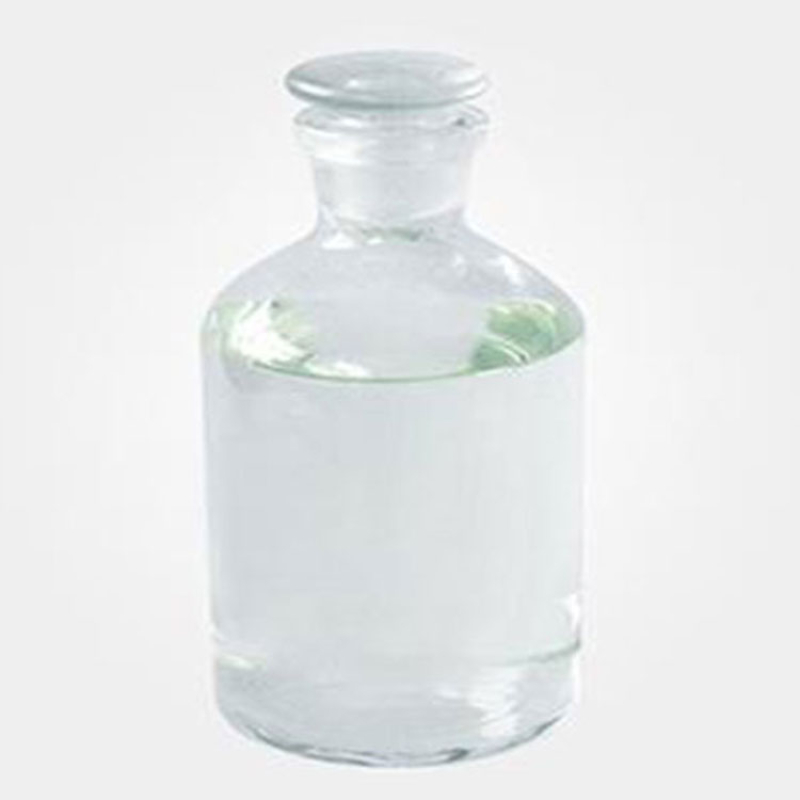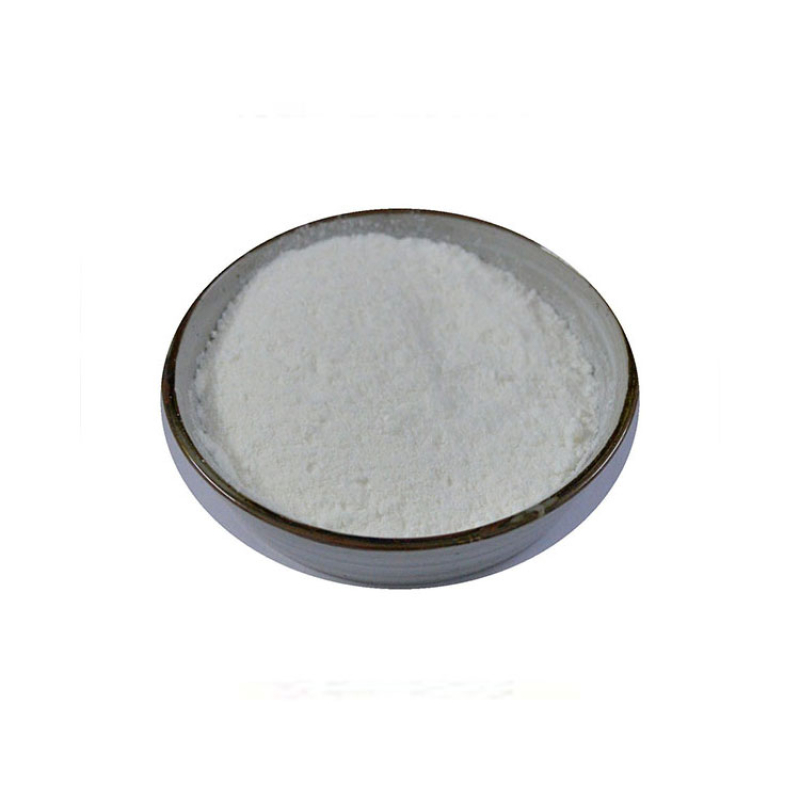Products Description of PolycaprolactoneCAS#24980-41-4Polycaprolactone (PCL) is a semi-crystalline polymer and a chemically synthesized biodegradable high molecular material. Its structural repeating unit contains 5 non-polar methylene groups - CH2.
Contact Now
Products Description of 4-Chlorophenethylamine CAS#156-41-24-Chlorophenethylamine is an organic compound with the molecular formula: C8H11ClN.Chemical PropertiesBoiling point 60-65 °C0.1 mm Hg(lit.)density 1.112 g/mL at 25 °C(lit.)refractive index n20/D 1.548(lit.)Fp 223 °Fstorage temp. Store Coldpka9.72±0.10(Predicted)form Liquidcolor Clear colorless to yellowSpecific Gravity1.12BRN 508247InChIKeySRXFXCKTIGELTI-UHFFFAOYSA-NCAS DataBase Reference156-41-2(CAS DataBase Reference)Safety InformationHazard Codes Xi
Contact Now
Products Description of MAA CAS#79-41-4Methacrylic acid is an important chemical raw material. It has two functional groups, carbon-carbon double bonds and carboxylic acid groups, so it can undergo reactions such as polymerization and esterification.
Contact Now
Products Description of Madecassic acid CAS#18449-41-7Madecassoside (MC) is the main active ingredient of triterpenoid saponins in Centella asiatica Urb., a plant of the Umbelliferae family. Studies have shown that MC has a wide range of pharmacological activities in vivo and in vitro, and can reduce collagen-induced arthritis inflammation, promote the proliferation of human fibroblasts cultured in vitro, treat or prevent hypertrophic scars and keloids, and protect myocardial ischemia-reperfusion injury.
Contact Now
Products Description of Benzalkonium Chloride CAS#63449-41-2Benzalkonium chloride is a cationic surfactant and a non-oxidizing fungicide. It has a broad spectrum and high efficiency in killing bacteria and algae. It can effectively control the reproduction of bacteria and algae and the growth of slime in water. It has good slime stripping effect and certain dispersion and penetration effects. It also has certain degreasing, deodorizing and corrosion inhibition effects.
Contact Now
Products Description of Benzalkonium chloride CAS#63449-41-2Benzalkonium chloride is a cationic surfactant and a non-oxidizing fungicide. It has a broad spectrum and high efficiency in killing bacteria and algae. It can effectively control the reproduction of bacteria and algae and the growth of slime in water. It has good slime stripping effect and certain dispersion and penetration effects. It also has certain degreasing, deodorizing and corrosion inhibition effects.
Contact Now
Products Description of Sodium MethoxideCAS#124-41-4Sodium methoxide is also called sodium methoxide. It is a kind of alcohol salt generated by methanol, with the chemical formula CH3ONa. It is a strong base commonly used in organic synthesis. Sodium methoxide is usually stored as a solution in alcohol solvents such as methanol and ethanol. It dissolves in ether to form a suspension, is sensitive to moisture, and decomposes into methanol and sodium hydroxide when it comes into contact with water: CH3ONa+H2O→CH3OH+NaOH. Sodium methoxide products come in two forms: solid and liquid.
Contact Now
Products Description of Benzalkonium Chloride CAS#63449-41-2Benzalkonium chloride is a cationic surfactant and a non-oxidizing fungicide. It has a broad-spectrum and highly effective bactericidal and algaecidal ability. It can effectively control the growth of algae and slime in water, and has good slime stripping effect and certain dispersion and penetration effects. It also has certain degreasing, deodorizing and corrosion inhibition effects. Benzalkonium chloride has low toxicity, no cumulative toxicity, is easily soluble in water, and is not affected by water hardness.
Contact Now
Products Description of 2-Amino-3-Pyridinecarboxaldehyde CAS#7521-41-72-Amino-3-pyridinecarboxaldehyde is a pyridine derivative with significant alkalinity, commonly used in organic synthesis and pharmaceutical chemical intermediates. It can synthesize organic compounds with pyridine skeletons through various chemical reactions such as condensation reaction, cyclization reaction and substitution reaction. It has a wide range of applications in basic chemical research.
Contact Now
Products Description of 4-Aminotetrahydropyran CAS#38041-19-94-Aminotetrahydropyran can be used as an organic synthesis intermediate and pharmaceutical intermediate4-Aminotetrahydropyran Chemical PropertiesBoiling point 60 °Cdensity 0.977 g/cm3 at 25 °Crefractive index n20/D 1.463Fp 54°Cstorage temp. Keep in dark place,Inert atmosphere,2-8°Cpka9.63±0.20(Predicted)form liquidcolor ColourlessInChIKeyAHVQYHFYQWKUKB-UHFFFAOYSA-NCAS DataBase Reference38041-19-9(CAS DataBase Reference)Safety InformationHazard Codes Xi,XnRisk Statements 10-34-41-
Contact Now
Products Description of 1-Bromoisoquinoline CAS#1532-71-41-Bromoisoquinoline is a low melting point solid.CAS No.
Contact Now
Products Description of 2,2,4-TrimethylpentaneCAS#540-84-1Isooctane is a colorless liquid with a high octane number and is therefore widely used as a gasoline additive.2,2,4-Trimethylpentane Chemical PropertiesMelting point -107 °CBoiling point 98-99 °C(lit.)density 0.692 g/mL at 25 °C(lit.)vapor density 3.9 (vs air)vapor pressure 41 mm Hg ( 21 °C)refractive index n20/D 1.391(lit.)Fp 18 °Fstorage temp. Store at +5°C to +30°C.solubility water: insolubleform Liquidpka>14 (Schwarzenbach et al., 1993)Specific Gravity0.692 (20
Contact Now
Products Description of Dibutylamine CAS#111-92-2Pure di-n-butylamine is a colorless liquid, m.p.-60℃ (-61.9℃), b.p.159℃ (48℃/1.73kPa), n20D1.4177, relative density 0.767 (20℃), f.p.41℃, soluble in water, acetone and benzene, and easily soluble in ethanol and ether.Dibutylamine Chemical PropertiesMelting point −62 °C(lit.)Boiling point 159 °C(lit.)density 0.767 g/mL at 25 °C(lit.)vapor density 4.46 (vs air)vapor pressure 1.9 mm Hg ( 20 °C)refractive index n20/D 1.417(lit.)Fp 106 °Fstorage temp. Store below +30°C.so
Contact Now
Products Description of 1,1,1-TrimethoxypentaneCAS#13820-09-2Boiling point 165℃.1,1,1-Trimethoxypentane Chemical PropertiesBoiling point 164-166 °C (lit.)density 0.941 g/mL at 25 °C (lit.)refractive index 1.408-1.41Fp 41 °Cstorage temp. Flammables areasolubility Chloroform (Slightly), DMSO, Methanol (Slightly)form clear liquidcolor Colorless to Almost colorlessSensitive Moisture SensitiveMerck 14,9717BRN 1739200Stability:Unstable in acidic solution, Unstable In Acidic SolutionCAS DataBase Reference13820-09-2(CAS DataBase Reference)NIS
Contact Now
Products Description of Tetrahydrothiopyran-4-one CAS#1072-72-6Tetrahydrothiopyran-4-one (4H-Thiopyran-4-one,tetrahydro-), the molecular formula is C5H8OS.Tetrahydrothiopyran-4-one Chemical PropertiesMelting point 60-64 °C (lit.)Boiling point 140.82°C (estimate)density 1.050 (estimate)refractive index 1.5100 (estimate)storage temp. Inert atmosphere,Room Temperaturesolubility Acetonitrile (Slightly), Chloroform (Slightly)form Crystalline Solidcolor White to pale yellowBRN 106464InChIKeyOVRJVKCZJCNSOW-UHFFFAOYSA-NLogP0.490 (est)CAS DataBase Refer
Contact Now
Products Description of 4-Aminoisoquinoline CAS#23687-25-44-Aminoisoquinoline is a white powdery crystal.CAS No.
Contact Now
Products Description of 4-Bromopyridine hydrochlorideCAS#19524-06-24-Bromopyridine hydrochloride is a white crystalline solid at room temperature and pressure. It has a certain degree of hygroscopicity and is easily deliquescent in water. It is often used as a coupling reagent and a precursor molecule of pyridine derivatives in organic synthetic chemistry. When used, it is often pre-treated with alkali to release 4-bromopyridine.
Contact Now
Products Description of 4-morpholinecarbaldehyde CAS#4394-85-8N-formylmorpholine (NFM) is an important organic solvent and fine chemical raw material. It is a colorless transparent liquid at room temperature. It has the chemical properties of amides.
Contact Now
Products Description of POLYGLYCERYL-4 LAURATE CAS#75798-42-4Colorless liquidFactory and Equipment ShowFast delivery timeInventory 2-3 working days New production 7-10 working days
Contact Now
Products Description of 4-Acryloylmorpholine CAS#5117-12-4N-Acryloylmorpholine is a chemical substance with the molecular formula C7H11NO2.4-Acryloylmorpholine Chemical PropertiesMelting point −35 °C(lit.)Boiling point 158°C 50mmdensity 1.122 g/mL at 25 °C(lit.)vapor pressure 1.03-1.64Pa at 25-29.9℃refractive index n20/D 1.512(lit.)Fp >230 °Fstorage temp. 2-8°Csolubility Soluble in waterpka-1.08±0.20(Predicted)form Liquidcolor Colorless to yellowWater Solubility 1000g/L at 20℃Sensitive Light Sensi
Contact Now
Products Description of LANTHANUM ACETATECAS#917-70-4White powderLANTHANUM ACETATE Chemical Propertiesdensity 2.02[at 20℃]Water Solubility 100g/L at 20℃CAS DataBase Reference917-70-4(CAS DataBase Reference)EPA Substance Registry SystemLanthanum acetate (917-70-4)Factory and Equipment ShowFast delivery timeInventory 2-3 working days New production 7-10 working days
Contact Now
Products Description of Mogroside V CAS#88901-36-4 Mogroside V is extracted from a plant called Momordica grosvenori. Momordica grosvenori is a vine plant of the Cucurbitaceae family (Mogrosvenori genus). The mature fruit of Momordica grosvenori is extremely sweet and is rich in cucurbitane-type tetracyclic triterpenoid saponins, among which Mogroside V is the main sweet component, with a dry weight content of up to 1.6%.
Contact Now
Products Description of 4-AminophenolCAS#123-30-8Aminophenol is also known as hydroxyaniline and aminohydroxybenzene. There are three isomers, namely o-aminophenol, m-aminophenol and p-aminophenol (4-aminophenol). In 1874, Baeyer et al. first prepared p-aminophenol. Due to the different relative positions of the hydroxyl group and the amino group, the three are also different in terms of physical and chemical properties. This product is weakly alkaline, weakly acidic and strongly reducing. Because it has both amino and phenol groups, it has the common properties of both.
Contact Now
Products Description of 4-Chloroquinoline CAS#611-35-84-Chloroquinoline is a key intermediate commonly used in the synthesis of quinoline derivatives with important biological activities.
Contact Now



































